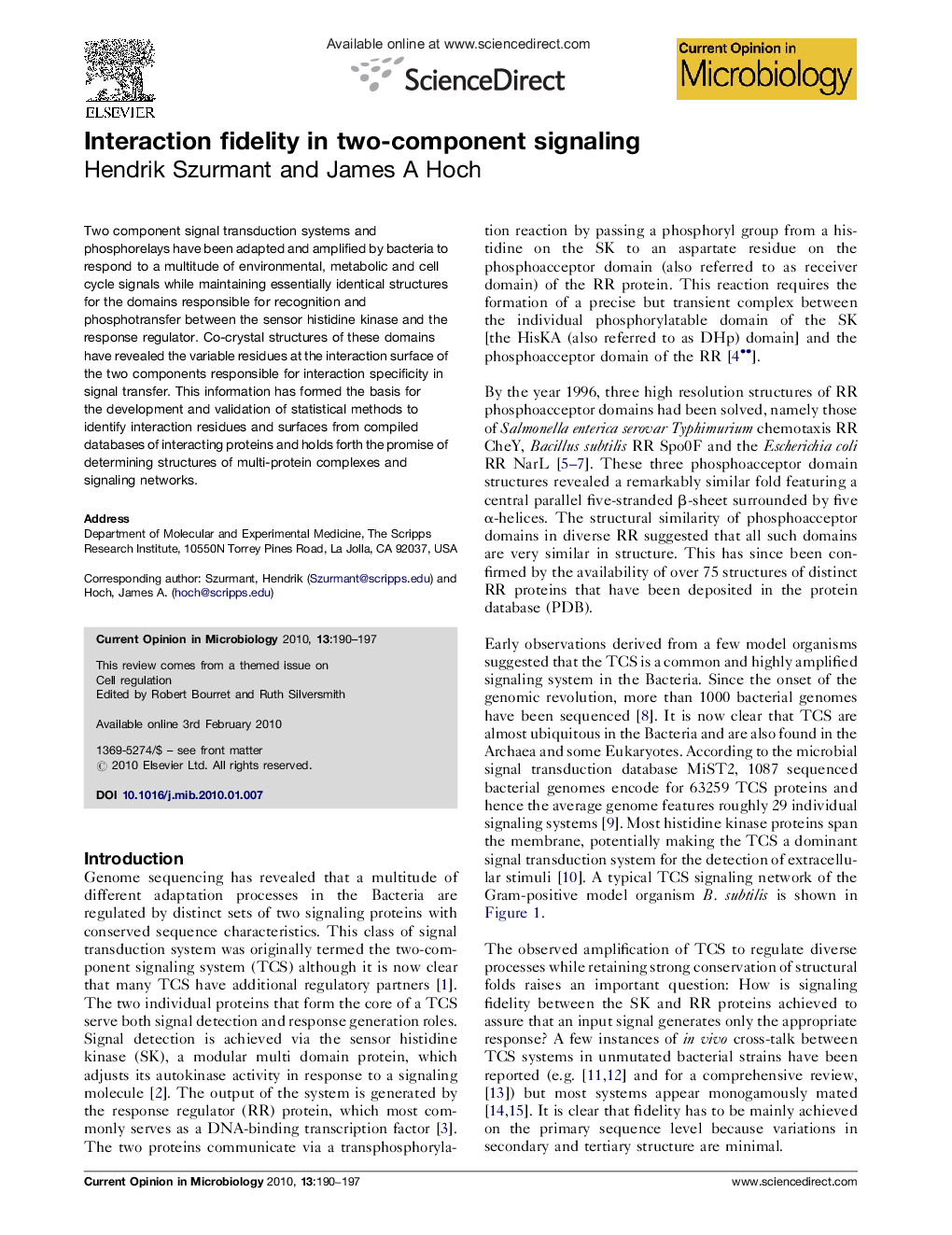| Article ID | Journal | Published Year | Pages | File Type |
|---|---|---|---|---|
| 3399329 | Current Opinion in Microbiology | 2010 | 8 Pages |
Two component signal transduction systems and phosphorelays have been adapted and amplified by bacteria to respond to a multitude of environmental, metabolic and cell cycle signals while maintaining essentially identical structures for the domains responsible for recognition and phosphotransfer between the sensor histidine kinase and the response regulator. Co-crystal structures of these domains have revealed the variable residues at the interaction surface of the two components responsible for interaction specificity in signal transfer. This information has formed the basis for the development and validation of statistical methods to identify interaction residues and surfaces from compiled databases of interacting proteins and holds forth the promise of determining structures of multi-protein complexes and signaling networks.
